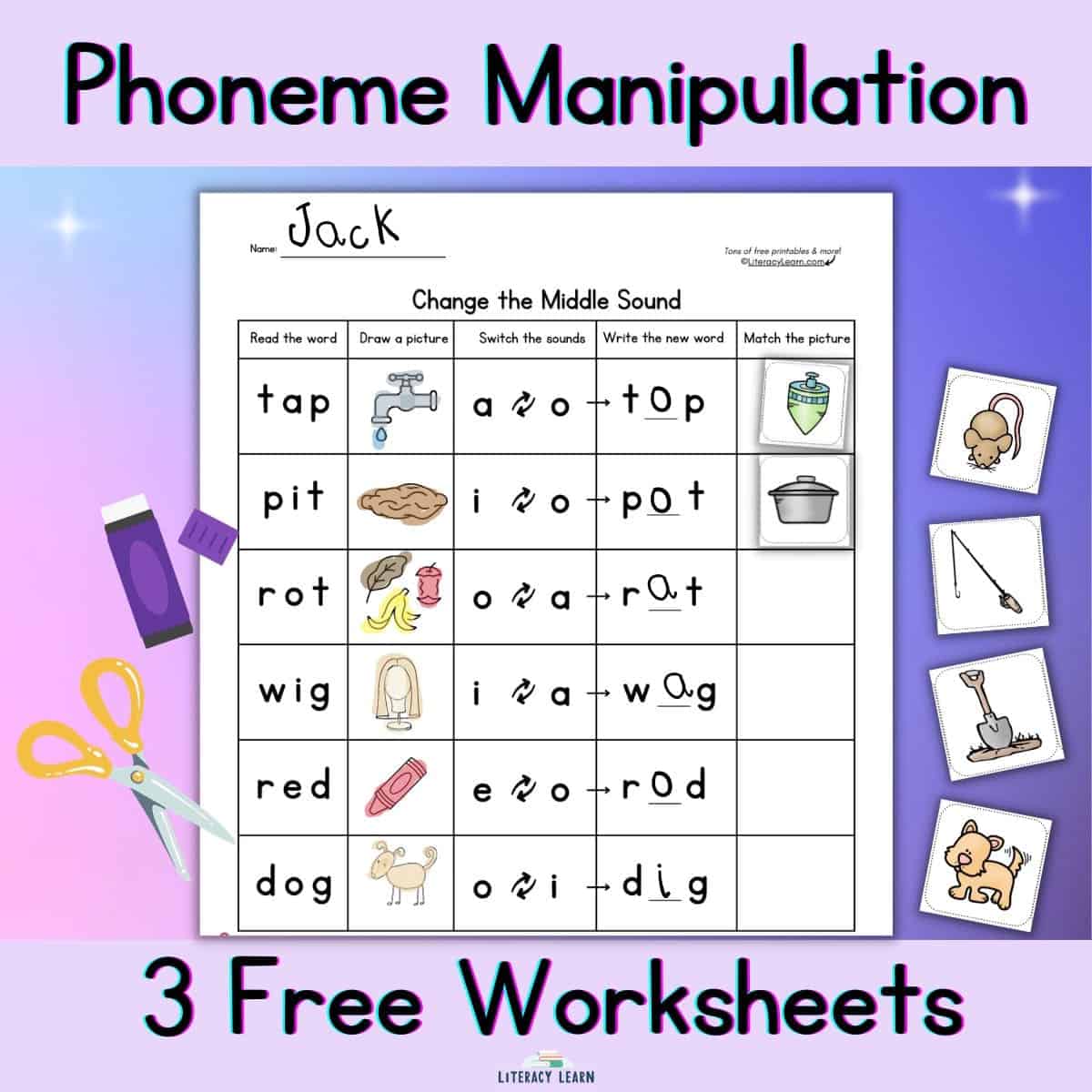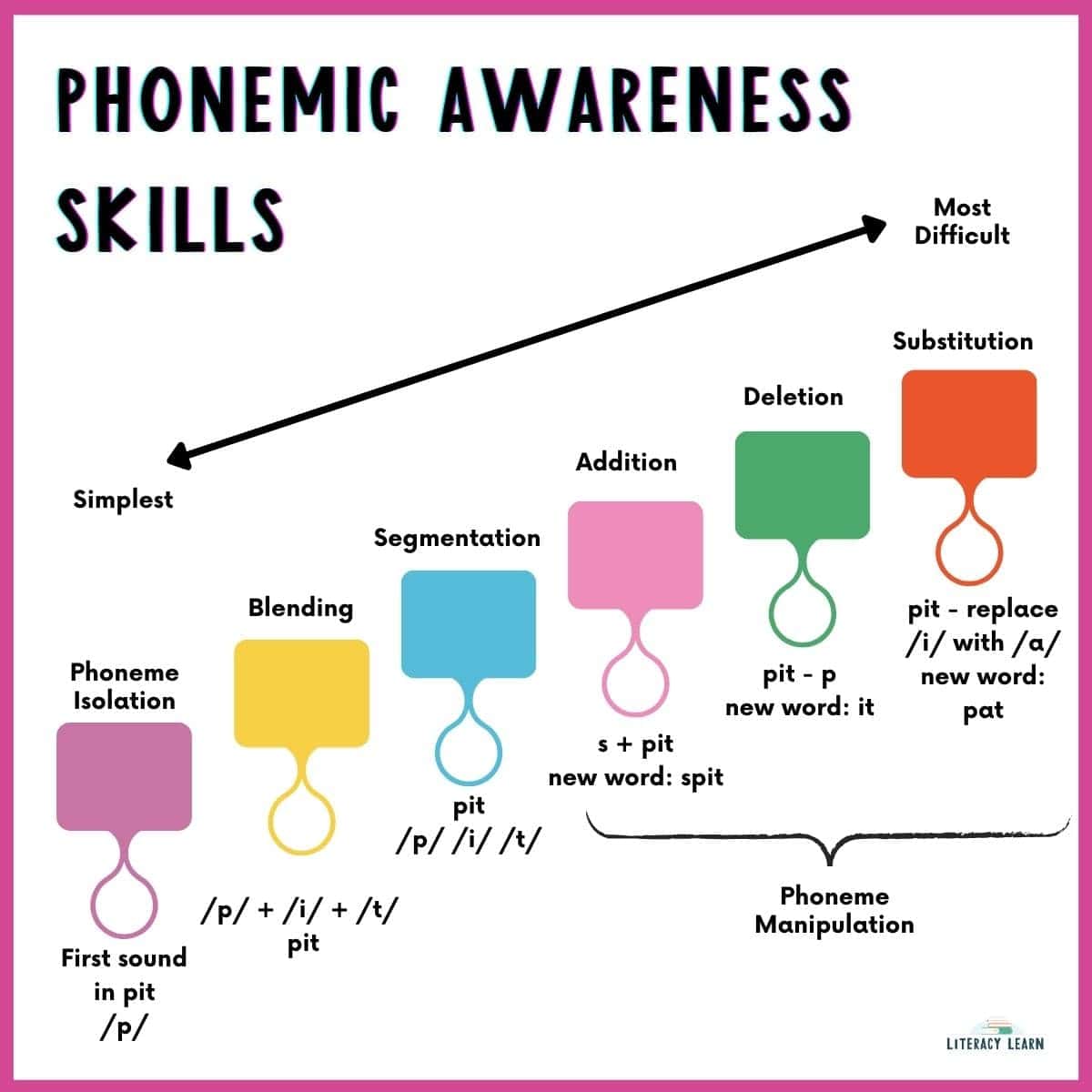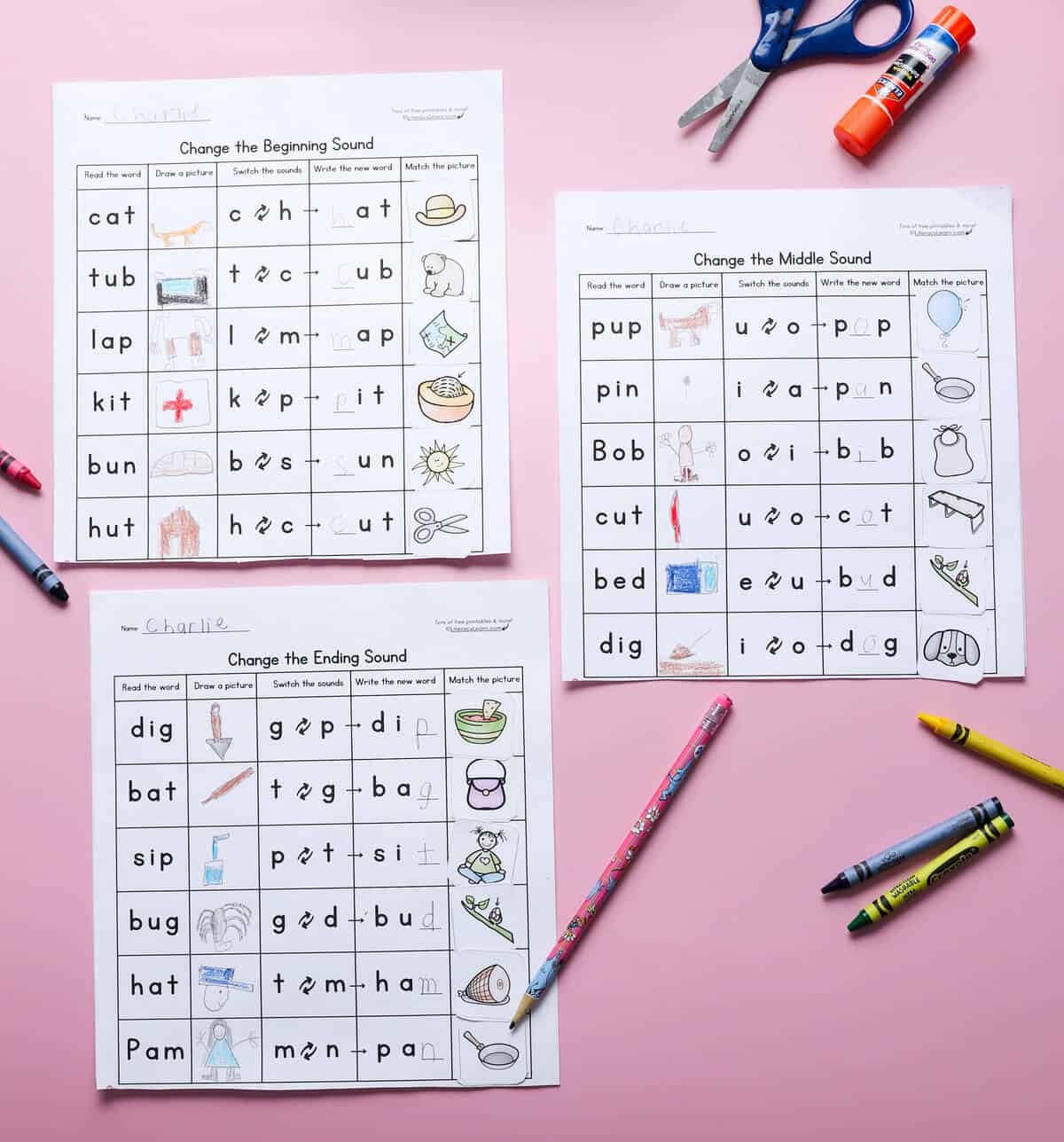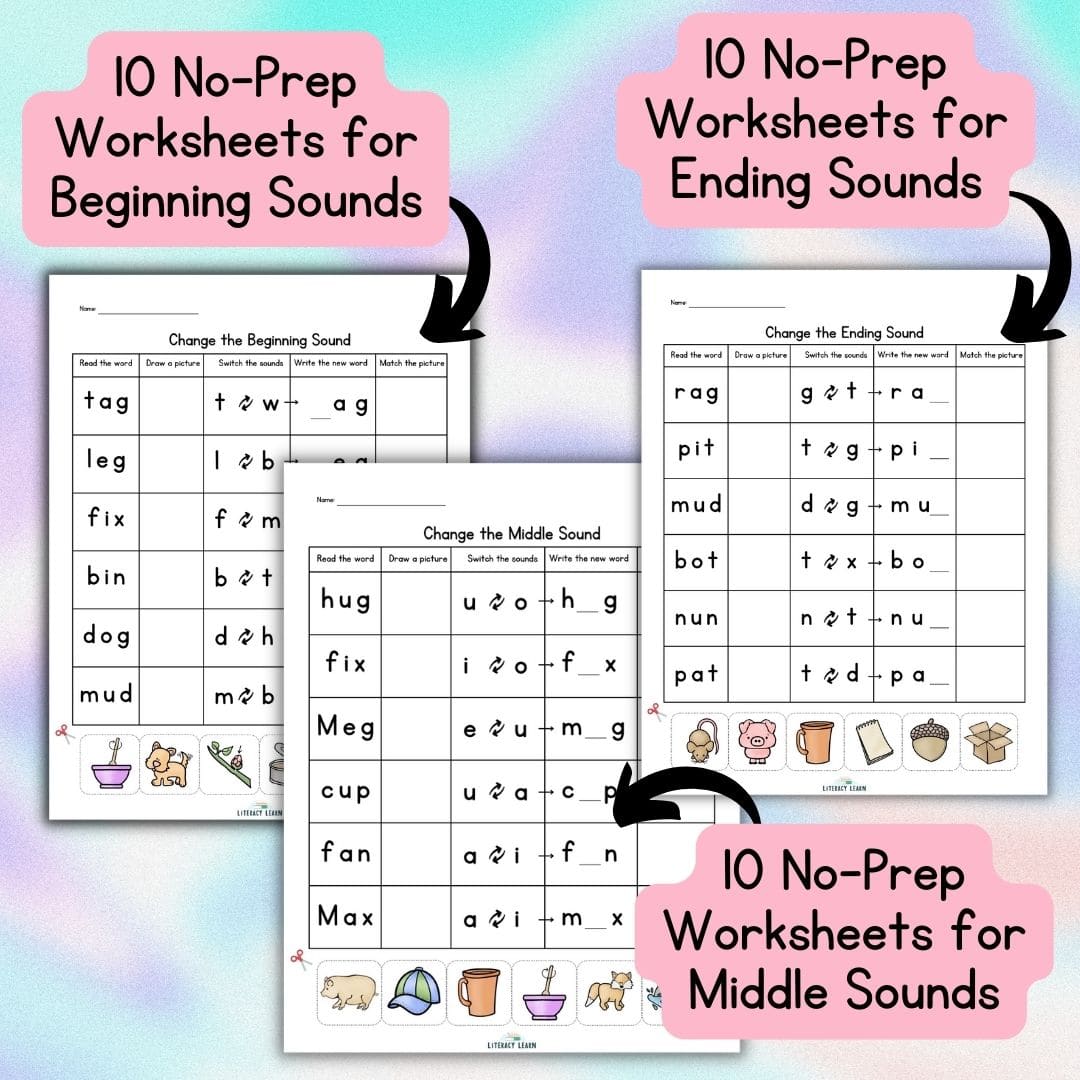Phoneme Manipulation: 3 Free Worksheets
This post may contain affiliate links. As an Amazon affiliate, we earn from qualifying purchases.
Learn all about phoneme manipulation, an important foundational phonological awareness skill. Use the 3 free worksheets for kids to practice this skill by changing beginning, middle, and ending sounds in words!

What Is Phoneme Manipulation?
Phoneme manipulation is changing sounds in words. This can be done by adding, deleting, or substituting sounds in words.
A phoneme is the smallest unit of sound. These small units of sound have important impact on words because changing one sound can change the whole meaning of a word.
Think about this example using the word pit:
- The word “pit” has three phonemes /p/ + /i/ + /t/.
- Let’s switch the first sound from /p/ to /b/. The new word is “bit.”
- Now let’s switch the middle sound from /i/ for /a/. The new word is “bat.”
- Then let’s delete the first sound /b/. The new word is “at.”
- Now let’s add the /m/ sound to the beginning of the word. The new word is “mat.”
You can easily see the impact that just one phoneme has on the meaning of a word. By changing one sound, we created new words!
Phoneme manipulation is the most complex of all phonemic awareness skills. Phonemic Awareness falls under the larger category of phonological awareness.

Why Practice Phoneme Manipuluation?
Research by Ehri (2001) and Adams (2001) has shown that phonological awareness is highly correlated to later success in reading and spelling.
Phoneme manipulation asks students to remember sounds, pick out certain ones, and either add, remove, or swap them. After that, they put the sounds back together to create a whole new word. This can be a very difficult task, but it’s an important one!
In the past, phonemic awareness skills have been done as an auditory skill only; however, some leading literacy experts, like Timothy Shanahan, have cited the National Reading Panel’s research and asserted that phonemic awareness done with the integration of letters is more effective than without.
That’s why we created our worksheets with letters. This helps kids bridge phonemic awareness skills to phonics skills, leading to greater reading and spelling success!
👩🏼🏫Want to dig deeper? Learn more about phonemes and graphemes and the important connection between them! And read more about phonemic awareness practice with letters.
Phoneme Manipulation Activities
There are multiple ways you can practice phoneme manipulation with letters.
An easy activity is to use elkonin boxes with magnetic letters! Give explicit instructions like, “Spell the word “yum.” Now, change /y/ to /h/. What’s the new word?”
Kids can use the elkonin boxes and physically manipulate the magetic letters to create new words. This is true multi-sensory learning!
You can also easily print our worksheets and use them a targeted activity that focuses on phoneme substitution.
If your students are practicing phoneme maniplation, word ladders (sometimes called word chains) are another perfect activity! Read all about this effective activity in our post about word ladders. You can also grab our popular no-prep word chaining activity in our TPT store.

Using the Worksheets
You’ll get three worksheets, organized by the placement of the phoneme that is being changed. One worksheet focuses on initial sounds, another focused on medial sounds, and another focused on final sounds.
The worksheets include CVC words, rather than words with blends or digraphs, to help kids at the most basic phoneme level. The activity was intentially created to help kids practice the important skill of blending sounds while also practicing phoneme manipulation.
All three worksheets can be completed following the same procedure:
- First, students read the word.
- After reading each word, kids will draw a picture that represents their understanding of the word. (This helps build visualizing skills, supporting both memory and comprehension).
- Next, students will switch the sounds.
- Now, kids write the new word formed by changing the beginning/middle/ending sound.
- Finally, students will find the picture that matches the new word. They will cut out the picture and paste it in the corresponding box.
Do you love this activity and want more to help your students master this skill? Grab our Phoneme Manipulation Resource with 30 total worksheets in our TPT store.

Conclusion
These activities are great ways to understand how changing even a single sound can completely alter the meaning of a word. It’s a fun and effective method to improve your phonemic awareness and expand your vocabulary. Kids have fun interacting and playing around with sounds and words!
To read the research referenced in this post:
- Adams, M. (1990). Beginning to read: Thinking and learning about print. Urbana-Champagin, The Reading Research and Education Center.
- Ehri, L.C., Nunes, S.R., Willows, D.M., Schuster, B.V., Yaghoub-Sadeh, Z., and Shanahan, T. (2001). Phonemic Awareness Instruction Helps Children Learn to Read: Evidence from the National Reading Panel’s Meta-Analysis. Reading Research Quarterly 36 (3): 250-287.
- Shanahan, T. (2020). Letters in Phonemic Awareness Instruction or the Reciprocal Nature of Learning to Read. Shanahan on Literacy.
Related Resources
Download & Print
We’d love to hear about your experience using these resources!
Please leave a comment below or tag us on Instagram @literacylearn!
DOWNLOAD TERMS: All of our resources and printables are designed for personal use only in homes and classrooms. Each teacher must download his or her own copy. You may not: Save our files to a shared drive, reproduce our resources on the web, or make photocopies for anyone besides your own students. To share with others, please use the social share links provided or distribute the link to the blog post so others can download their own copies. Your support in this allows us to keep making free resources for everyone! Please see our Creative Credits page for information about the licensed clipart we use. If you have any questions or concerns regarding our terms, please email us. Thank you!

